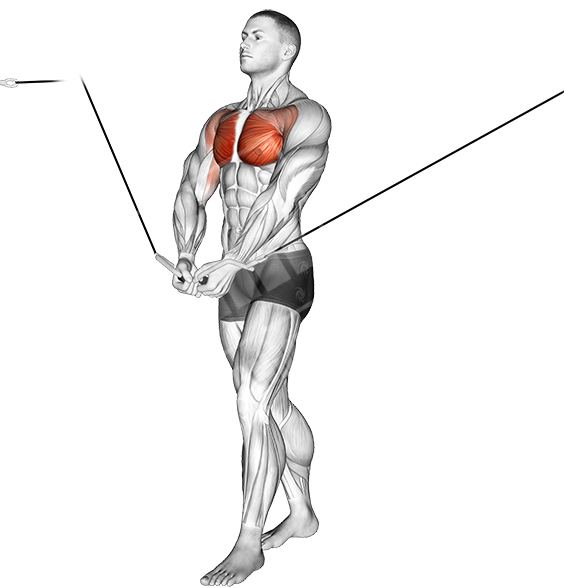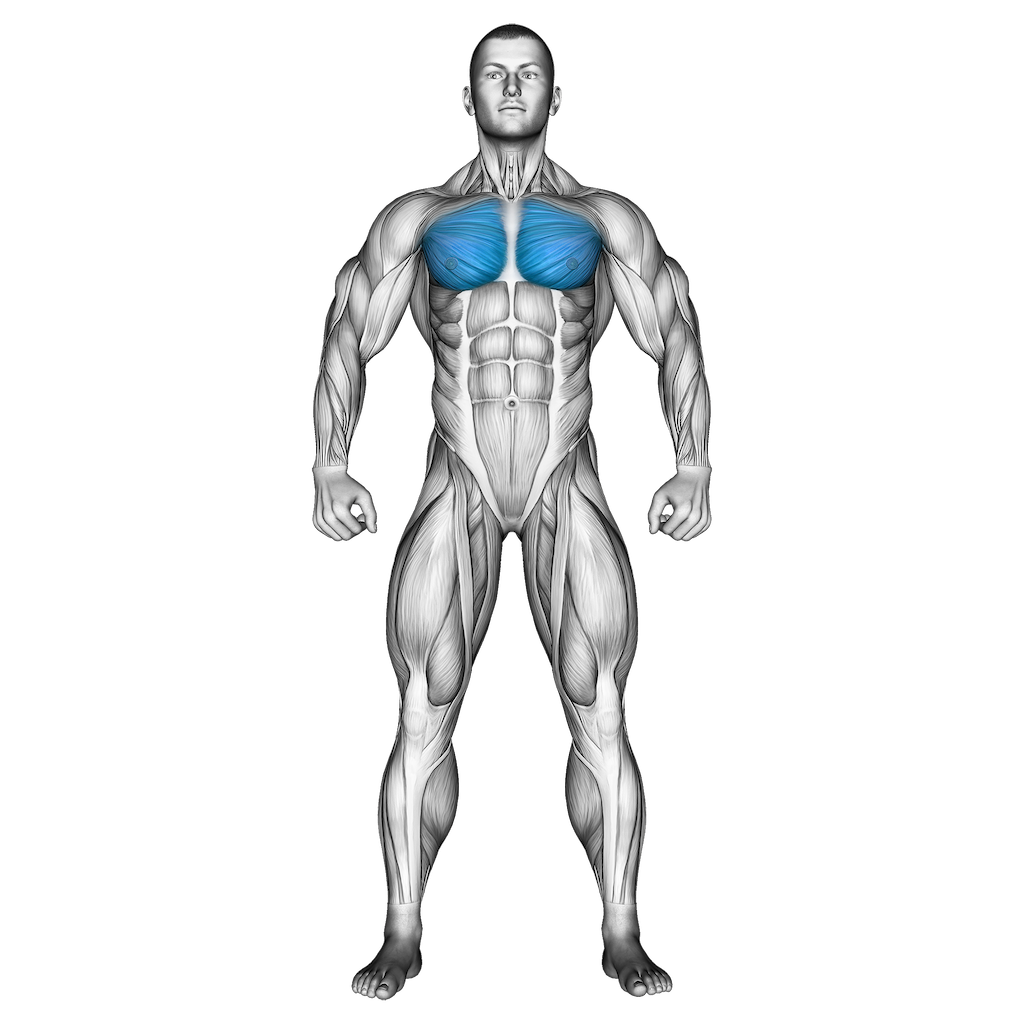TRX

If you’re looking for a full-body workout that targets your core and strengthens your muscles, then look no further than TRX Training! This type of strength training has become increasingly popular among athletes and fitness experts because it helps to build balance, coordination, flexibility, agility, endurance, and muscle in an affordable and challenging way.
TRX can be used both indoors or out, so no matter where you are – there’s always an opportunity to strengthen your body – making it the perfect method of exercise for every fitness level. With just a few pieces of equipment, you can get a complete workout without breaking the bank compared to other methods, such as Pilates or yoga classes. So if you are looking for an effective workout regimen, read on to find out more about this amazing training program!
Overview of TRX and its Benefits
The TRX (Total Body Resistance Exercise) system, developed by a former U.S. Navy Seal, is a fitness game-changer. It leverages gravity and the user’s body weight to perform a wide range of exercises that can be modified for any fitness level. But what sets TRX apart? One of the significant advantages of TRX is its focus on functional movement.
This means it targets multiple muscle groups simultaneously instead of isolating them like traditional workouts, which leads to improved overall strength, balance, and core stability. Furthermore, its compact, portable design allows for TRX to be used virtually anywhere, making it a flexible option for those with a busy lifestyle. Lastly, due to the suspension nature of the workout, there is a lower risk of injury, making it a safe yet highly effective exercise option. Whether you’re a beginner or a seasoned athlete, TRX offers a unique, scalable way to meet your fitness goals.
Types of Exercises You Can Do With TRX
TRX training offers a diverse variety of exercises designed to challenge individuals at all fitness levels. Here are some exercises to incorporate into your routine:
- TRX Squat – Stand facing the anchor, holding the handles in front of your waist with the straps under tension. Sit back and down into a squat, keeping your back straight and chest lifted. Push back up to stand.
- TRX Row – Stand facing the anchor with your feet hip-width apart. Lean back until your body is at a slight angle, arms fully extended, and pull your chest up to the handles. Lower back down with control. This targets the upper back and arm muscles.
- TRX Chest Press – Stand facing away from the anchor point, and lean forward so your body is at a slight angle. Bend your elbows to lower your chest towards your hands, then push back up to the start.
- TRX Plank – With your feet in the foot cradles, position your body in a push-up position with your hands directly under your shoulders. Maintain a straight line from head to heels by engaging your core.
- TRX Lunge – Stand facing away from the anchor, with one foot in the foot cradle. Lower into a lunge, keeping your knee directly over your ankle. Push back up to the start.
Tips to Achieve Maximum Efficiency When Doing TRX Exercises
To maximize the benefits of your TRX workouts, here are some important tips to consider:
- Maintain Proper Form: This is crucial to prevent injuries and ensure you’re effectively targeting the intended muscles. Pay attention to your alignment and posture throughout each exercise. A mirror can be a helpful tool to visually confirm your form.
- Engage Your Core: TRX training is all about core strength. During every exercise, make sure your core is engaged – think about pulling your belly button in towards your spine. This will not only stabilize your body but also enhance your balance and power.
- Control Your Movements: A common mistake is rushing through the exercises. Slow, controlled movements yield better results by increasing time under tension for your muscles, which can lead to greater strength gains.
- Adjust Your Stance: By adjusting how close or far you stand from the anchorage point, you can change the difficulty of the exercise. The closer you are to the anchor point, the more challenging the exercise becomes.
- Regularly Change Your Routine: Switch up your routine regularly to keep your muscles guessing and to prevent a plateau. By varying the exercises, the intensity, and the order in which you perform them, you can continue to challenge yourself and progress in your fitness journey.
- Consistency is Key: Like any fitness program, consistency is crucial for seeing results. Make sure to incorporate TRX into your weekly workout routine and stay consistent to achieve your fitness goals.
Different Ways to Incorporate TRX Routine into Your Daily Workouts
Incorporating TRX into your daily workouts can be accomplished in several practical and effective ways:
- Combine TRX with other workouts: You can combine TRX training with other forms of exercise, such as running, cycling, or weightlifting. For instance, you might begin with a TRX warm-up, move on to weightlifting or cardio, and then return to the TRX for a cool-down session.
- Use TRX on recovery days: On days when you’re not doing your regular, intense workouts, consider using TRX for gentle, low-impact exercises. This way, you’re still active and aiding your body’s recovery without the risk of overexertion.
- Incorporate TRX into your circuit training: Adding TRX exercises to your circuit training can increase the intensity and versatility of your workout. For instance, include TRX squats, rows, or lunges in your circuit for a challenging full-body workout.
- Perform TRX exercises during breaks: If you’re working from home or have long periods of sedentary work, use short breaks as an opportunity for a quick TRX exercise. This could be a simple set of TRX rows or squats to get your blood flowing and muscles engaged.
- Use TRX for interval training: TRX exercises can be effectively incorporated into high-intensity interval training (HIIT) routines. You can alternate between high-intensity TRX exercises and short recovery periods.
How to Adapt Your Routine According to Your Fitness Goals
Adapting your TRX routine to meet specific fitness goals is a crucial aspect of your training. Here’s how you can tailor your TRX workouts to align with your objectives:
- Weight Loss: For weight loss, incorporate more high-intensity cardio-oriented exercises using TRX. This could include a variety of jumping movements, rapid squats, or high-intensity planks. The key is to maintain a high heart rate over an extended period, which can be achieved by minimizing rest periods between sets.
- Strength Building: If your goal is to build strength, focus on slow, controlled exercises with TRX that target specific muscle groups. Make sure to adjust your stance to increase resistance, making the exercises more challenging and effective for strength gains. Examples include slow, deep squats, tightened planks, and precise TRX rows.
- Flexibility and Balance: TRX is an excellent tool for improving flexibility and balance. For these goals, choose exercises that stretch your muscles and challenge your balance. Long-held planks, deep lunges, and single-leg exercises are all excellent choices.
- Endurance Training: If your goal is to improve endurance, you should focus on long, sustained TRX workouts with shorter rest periods. The key is to keep your body moving and your heart rate elevated, so include a mix of cardio and strength exercises.
What is TRX Suspension Training and How Does it Work
TRX Suspension Training is a form of resistance training that includes bodyweight exercises in which a variety of multi-planar, compound exercise movements can be performed. These are done with the aim of developing strength, balance, flexibility, and joint stability simultaneously. TRX is an acronym for Total Resistance Exercises. This training approach leverages gravity and the user’s body weight to complete the exercises.
The TRX system, which includes straps with handles, was developed by a former U.S. Navy Seal. It allows you to adjust your body position to add or decrease resistance. You perform exercises by holding the TRX handles and leaning against gravity.
Your hands or feet are typically in contact with the ground, while the rest of the body is held in a plank position—the core is engaged for stabilization.
One of the key benefits of TRX training is its adaptability to all fitness levels, as the intensity of the workout can easily be modified by adjusting the angle of your body. Additionally, as TRX training utilizes functional movements and engages the entire body, it can effectively improve overall body strength and balance.
Get Started with TRX – Setting Up Your Home Gym
Setting up your own TRX home gym can be a straightforward process with the right equipment and space. Here are some key steps to get you started:
- Purchase a TRX Suspension Trainer: The first and most essential item you’ll need is a TRX Suspension Trainer. You can purchase this directly from the TRX website, sporting goods stores, or online marketplaces. Make sure to buy a genuine product to ensure safety and effectiveness.
- Choose a Suitable Space: You’ll need a clear space of approximately 6 feet by 8 feet for your TRX workouts. The area should be free of any clutter or obstacles that could interfere with your movements or pose a safety hazard.
- Select an Anchor Point: The TRX trainer needs to be anchored to a solid point. This could be a door, a beam, a tree, or a specially installed hook in your ceiling. Ensure the anchor point is sturdy and can support your weight.
- Install the TRX Suspension Trainer: Follow the manufacturer’s instructions to safely install the TRX trainer. Ensure it is securely fastened, and check the stability before starting any exercises.
- Test your Setup: Before diving into intense workouts, perform some basic exercises to test your setup. Check the stability of the anchor and the comfort of the grips. Adjust the length of the straps to suit your height and the specific exercises you plan on doing.
- Plan Your Workouts: With your home gym set up, you can start planning your TRX workouts. Remember to incorporate routines that align with your fitness goals and consistently mix up your exercises to keep challenging your muscles.
Common Mistakes to Avoid With Your TRX System
When using your TRX system, there are some common mistakes you should endeavor to avoid in order to maximize your workout results and prevent injuries:
- Poor Form: The most widespread mistake is maintaining improper form while performing exercises. This not only reduces the effectiveness of the workout but also increases the risk of injury. Always ensure your body is properly aligned, and engage your core for stabilization.
- Incorrect Strap Length: Adjusting the straps to the appropriate length for each exercise is crucial. Too short or too long straps can lead to discomfort, ineffective workouts, and potential injury.
- Not Engaging the Core: TRX exercises require you to engage your core muscles constantly for stability. Failure to engage your core can lead to an unstable workout, reducing its effectiveness and potentially leading to injuries.
- Rushing Through the Movements: TRX exercises are meant to be carried out in a slow, controlled manner to maximize muscle engagement. Rushing through the movements will decrease the effectiveness of your workout and increase the risk of injury.
- Ignoring the Warm-up and Cool-down: Warming up before starting your TRX workout prepares your body for the intense exercises to follow while cooling down helps to gradually decrease your heart rate and prevent muscle stiffness. Skipping these steps can lead to muscle sprains, strains, or other injuries.
Pros and Cons of Using TRX for Exercise
TRX training offers a unique blend of benefits and challenges that make it an incredibly versatile tool in any fitness regimen.
Pros of TRX Training
- Versatility: TRX workouts can be adapted to suit any price fitness level. You can easily modify the intensity of your workout by adjusting your body angle or the length of the straps.
- Full-Body Workout: TRX engages all your major muscle groups, providing a comprehensive full-body workout. It encourages the use of functional movements that can improve your performance in daily activities.
- Improves Core Strength: Almost every TRX exercise requires engagement of the core muscles, helping to strengthen your abs and lower back.
- Enhances Flexibility and Balance: The instability created by the suspension system challenges your balance, while the range of motion in exercises enhances your flexibility.
- Portable and Convenient: The TRX system is randy Hetrick lightweight and comes with a carrying bag, making it easy to set up a workout space anywhere.
Cons of TRX Training
- Requires Proper Form: Incorrect form can lead to parachute webbing ineffectiveness or injury. It may take time to learn and maintain proper form, especially for beginners.
- Not Ideal for Heavy Strength Training: While TRX is great for functional strength, it may not provide the heavy resistance needed for serious strength building like traditional weightlifting.
- Installation Concerns: You’ll need a sturdy anchor point for the TRX system. If one is not available, installation can be challenging.
- Cost: TRX systems can be more expensive than other home workout equipment.
FAQs
How can I determine the difficulty level of a TRX exercise?
To determine the difficulty level for any TRX exercise, consider three factors: your body angle (the higher the angle, the more challenging the move), your speed of movement (slower movements will be harder than faster ones), and the grip on the suspension handles (a wider grip increases resistance).
Are there risks associated with using a TRX system?
As with any private investor physical activity, there is always some risk involved in using a TRX system. Paying attention to proper form and regularly monitoring your progress can help reduce the potential for injury. Additionally, if you experience any pain or discomfort during a TRX exercise, stop immediately and seek medical advice.
Are there any exercises that should be avoided with a TRX system?
Flat-bottom steering wheel Exercises that put excessive strain on the shoulders, such as pull-ups and lateral raises, should be avoided when using a TRX system. Additionally, it is best to avoid any exercises that involve jerky, uncontrolled movements or require you to let go of the straps. TRX exercises can be dangerous and should only be attempted by experienced users.
Are there any accessories I need for my TRX system?
TRX systems typically come with all the necessary components, including suspension handles, foot cradles, and a door anchor. However, accessories like head-up display weighted vests or ankle straps can be useful additions to your workout. Be sure to research any additional accessories before purchasing them.
How often should I do TRX workouts?
The frequency of your workouts will depend on your fitness goals and level of experience with the TRX system. Generally, it is recommended to start with two or three workouts per week and gradually increase as you become more comfortable. Pay attention to your body’s signals, and make sure to allow yourself rest days in between workouts.
Conclusion
I hope this article has given you a better understanding of the benefits and risks associated with TRX training. With its versatility, portability, and full-body workout potential, it can be an effective tool for improving strength, flexibility, and balance. By paying attention to proper form and monitoring your progress, you can maximize the potential of TRX training while minimizing the chance of injury. So what are you waiting for?



